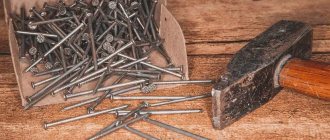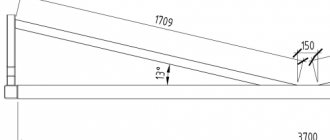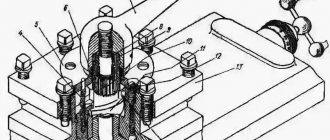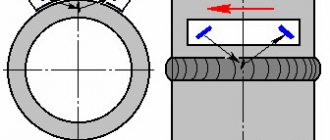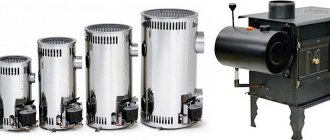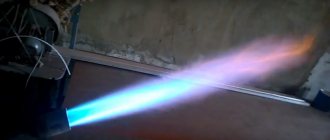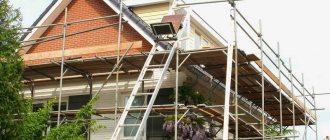Fasteners for wooden structures provide reliable fixation at the joints of wooden elements. These parts make it possible to obtain a durable structure that can withstand various vibrations and mechanical loads.
Various types of wood fasteners differ in size and purpose. They have an unusual shape and structure.
How to choose the right metal products that will help create a durable building? The answer to this question is presented in our detailed material.
Types of fasteners for wood
The following types of connecting elements for wood are distinguished. These include:
- connections with perforated base;
- anchor screws;
- "tenon and groove";
- three-dimensional slats;
- "hedgehog";
- self-tapping screws with KonstruX thread.
Each type of product differs in size, shape and material from which it is made.
Methods of fastening wood structures
Let's talk in more detail about the options for fastening to a wooden wall and other solid structures, and also find out which one gives an excellent result.
Traditional
This method involves installing parts into a groove using a hammer, nails or staples. Cutting out the required grooves negatively affects the load-bearing capacity of the nodes from the array.
It is difficult to estimate the forces applied to cutting staples or nails, since they were not calculated. Also, with this approach, uneven distribution of expected loads throughout the structure cannot be ruled out.
minimum wage
Fastening for solid structures, including wooden stairs, using MZP is, as a rule, only possible if there is a hydraulic press designed to connect the units of the entire structure. The beams being constructed are installed at a certain angle and then pressed together.
The disadvantage is that the structural parts of such a fastening must initially be assembled on the ground. Also, additional rafters have to be installed on the ground to maintain not only the level, but also the configuration.
Once all the parts have been assembled, the frame should be assembled, which requires special equipment.
Perforated mount
This fastening of wooden elements, including the ceiling, helps speed up the installation of structures. This type of fastening consists of brackets and corners of different sizes and thicknesses made of steel. These parts are manufactured according to the dimensions of the timber.
When fastening solid wood structures using perforated fastening, you cannot do without a hammer, nails, and screws.
A huge advantage is the ability to assemble the entire structure in parts. With this method, cutting or pre-cutting is not required.
Metal fastening for solid structures
Nowadays, during the construction and reconstruction of wooden structures, or rather, as a connection of the elements from which such structures are made, a certain fastening is used. As a rule, the connection of such fasteners is made at an angle; for this purpose, steel elements are used.
Thanks to the use of these elements, construction is much simpler. This mainly applies to the work of installing the roof frame, or the structure itself.
When using special fastening, there is no need to use nails or staples, which is why the period of construction work is reduced to a minimum.
There are several varieties of this fastening: plates and steel parts. All have holes for self-tapping screws. In addition to the large savings, it is important to note such important indicators as a reduction in the price of the design, a significant increase in productivity, but the quality of the products remains at the highest level.
Perforated connections
This type of connection is used for fixing wooden and concrete parts. Most often they are hidden deep in the cavity of the structure being built. They are made from durable hardened steel. The thickness of each element ranges from 1.6 to 2.5 mm.
In specialized departments there are products made of low-carbon steel. As a rule, such models have a fairly high cost. They are considered stronger and more resilient.
They are mainly used when laying ceilings and floors. Such hidden fasteners for wood can be used in the construction of houses made of timber.
Perforated fasteners
When beams, as well as floor surface logs, are hidden in the interior space, they can be connected using beam shoes. This fastener for wood structures is suitable for fastening solid wood not just to wood, but also to concrete and brickwork. It is created from durable steel.
Manufacturers advise fastening such fasteners to the parts being connected with special screws, and in case of excessive load, or fixing to a stone material, use the holes for the necessary bolts. In addition to anchor shoes, today you can purchase special clamps, corners and much more.
Metal anchors
Anchor screws have huge advantages among most products. They can be used in conjunction with perforated connections. This ratio makes it possible to make the building resistant to climatic disasters.
These products are made from high-strength metal alloys. Most often they are re-hardened and plated with zinc. Galvanized wood fasteners can be used in areas with high humidity. They are resistant to corrosion and deformation during the driving process.
The length of the elements varies from 5 to 10 cm. The diameter is about 6 mm. Such models are used to create roofing or flooring. There is a screw thread along the entire length, which ensures tight fixation inside the wood.
Self-tapping screws
Self-tapping screws are often confused with self-drilling screws; in fact, they are different from each other. A classic self-tapping screw is a metal fastener with a tight thread, thinned on one edge and ending in a hex head on the other.
To work with self-tapping screws, you will need special attachments for a screwdriver, a screwdriver, or a hex nut and, possibly, a pair of flat washers to prevent spontaneous loosening of the connection.
Fastening wood with screws and self-tapping screws is also different from nails and screws. To secure the self-tapping screw, a hole of the same diameter should be drilled through the elements to be connected. Then a washer is placed and the screw is screwed into the hole. On the opposite side, a second washer is screwed in and a nut is put on.
Of course, this method of fastening wood is more labor-intensive, but also more durable. Thanks to the tightening on both sides, the wooden elements are fastened to each other with greater force. However, unlike screws, screw threads do not get stuck in the material, i.e. the wood at the point of fastening may “walk” slightly. Of course, this problem can be solved if you use more screws and screw them closer together.
Correctly made screw connections are very strong. In addition, self-tapping screws and bolts are indispensable if the task is to fasten very massive parts of structures. The length of the bolts can reach tens of centimeters, so developers most often use them to connect the thickest wooden elements - logs and beams.
However, to work with this type of fastener you need some experience and special tools. You will have to buy special sockets and wrenches (preferably several: flat wrenches, ring wrenches, torque wrenches, socket wrenches or screwdrivers with socket wrenches). Also, in order to shorten screws that are too long, you will need a grinder or a grinder.
Tongue and groove system
This variety is produced by a German company. The product is made of durable aluminum alloy. One part has spikes, and the other is equipped with an additional groove. They are installed according to the dovetail principle. Thanks to this connection, it is possible to reduce the load on the building during operation.
A similar model can be used for both hidden and closed connection points. It is recommended to install metal parts in pre-prepared holes. They should be firmly attached inside the wooden base.
The main disadvantage of this model is their high cost. This is directly related to the complexity of the structure and its reliable fixation of wooden parts.
Fasteners with complex threads
Unusual self-tapping screws, which make it possible to save time and money, since this option does not require metal parts. Self-tapping screws are equipped with threads, which help create a high degree of resistance when pulled out, and are also tightly screwed into an array, which completely changes their traditional functioning.
In this case, the work of the screws occurs exclusively by pulling out, which gives them the opportunity to absorb most of the forces that fall on the connection. So, you can fasten elements at an angle, combine parts, minimizing their deflection, as in the photo of wood fasteners below.
3D slats
Specialized departments provide a detailed catalog of the best wooden fasteners. One of these connections is three-dimensional slats. They are connected perpendicular to each other. As a result, a T-shaped connection is formed, which is considered the strongest.
They are made from durable metal alloys that can withstand all kinds of loads. They have a length from 60 to 750 mm. There are cuts and protrusions along the entire plane of the iron model.
Lanyard for rigging workCrab system for profile pipes: features of the selection and use of fastening systems and connecting elements
What is a rigging shackle? Size standards, modern types, rules and features of choice
During the installation process, one edge of the part is fixed in one of the parts of the wooden beam. Next, small cuts are made on the logs, equal in length to the protruding part of the three-dimensional lath.
The choice of such a product should be made in accordance with further loads during operation.
Products "Hedgehog"
They are a large washer made of low carbon steel. Galvanic coating is applied along the entire perimeter. They are designed for self-tapping screws. The diameter of the washer is from 50 to 85 mm.
There is a small recess in the upper part, drilled at different angles. This provides different connection depths during the installation of wooden parts.
